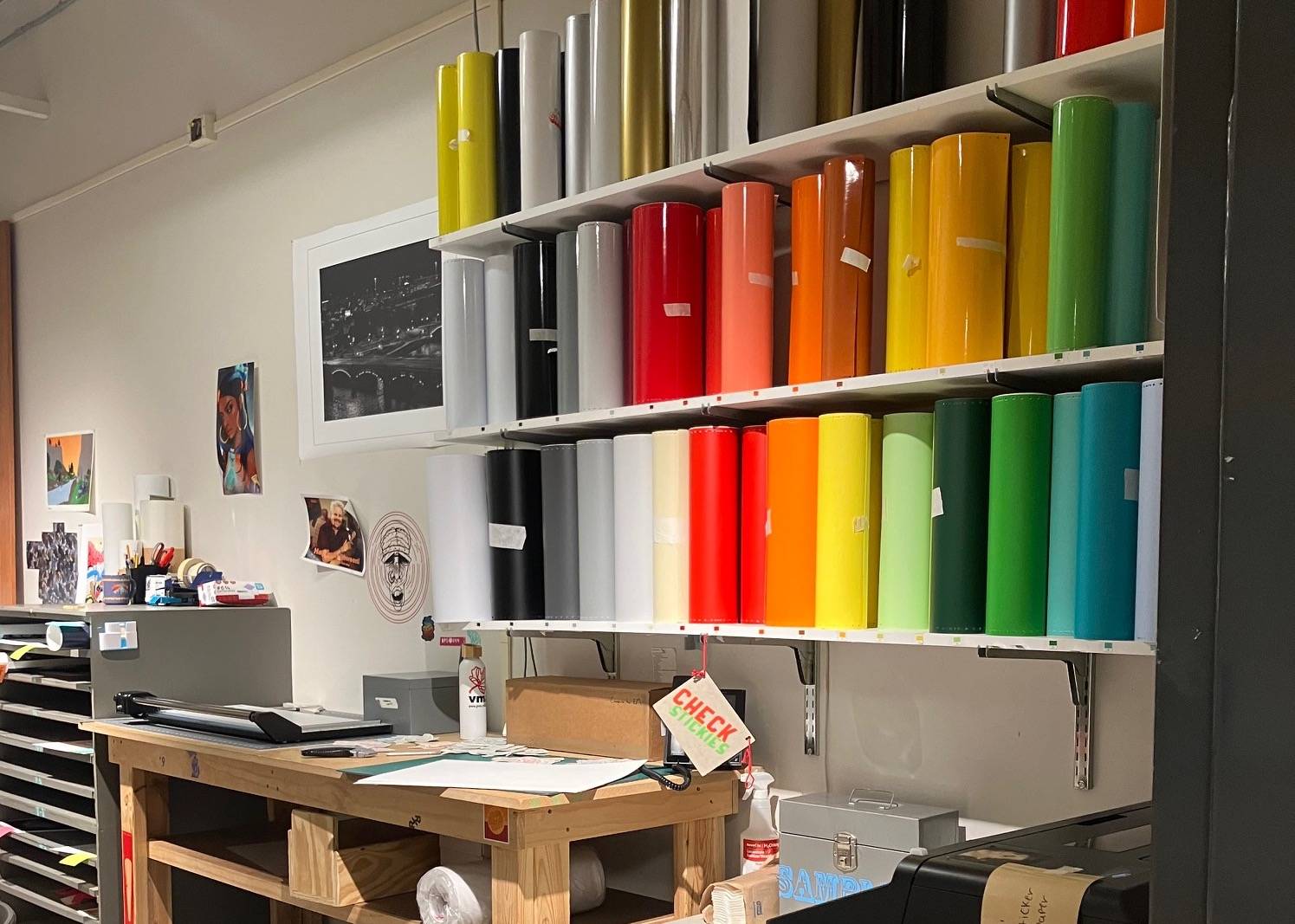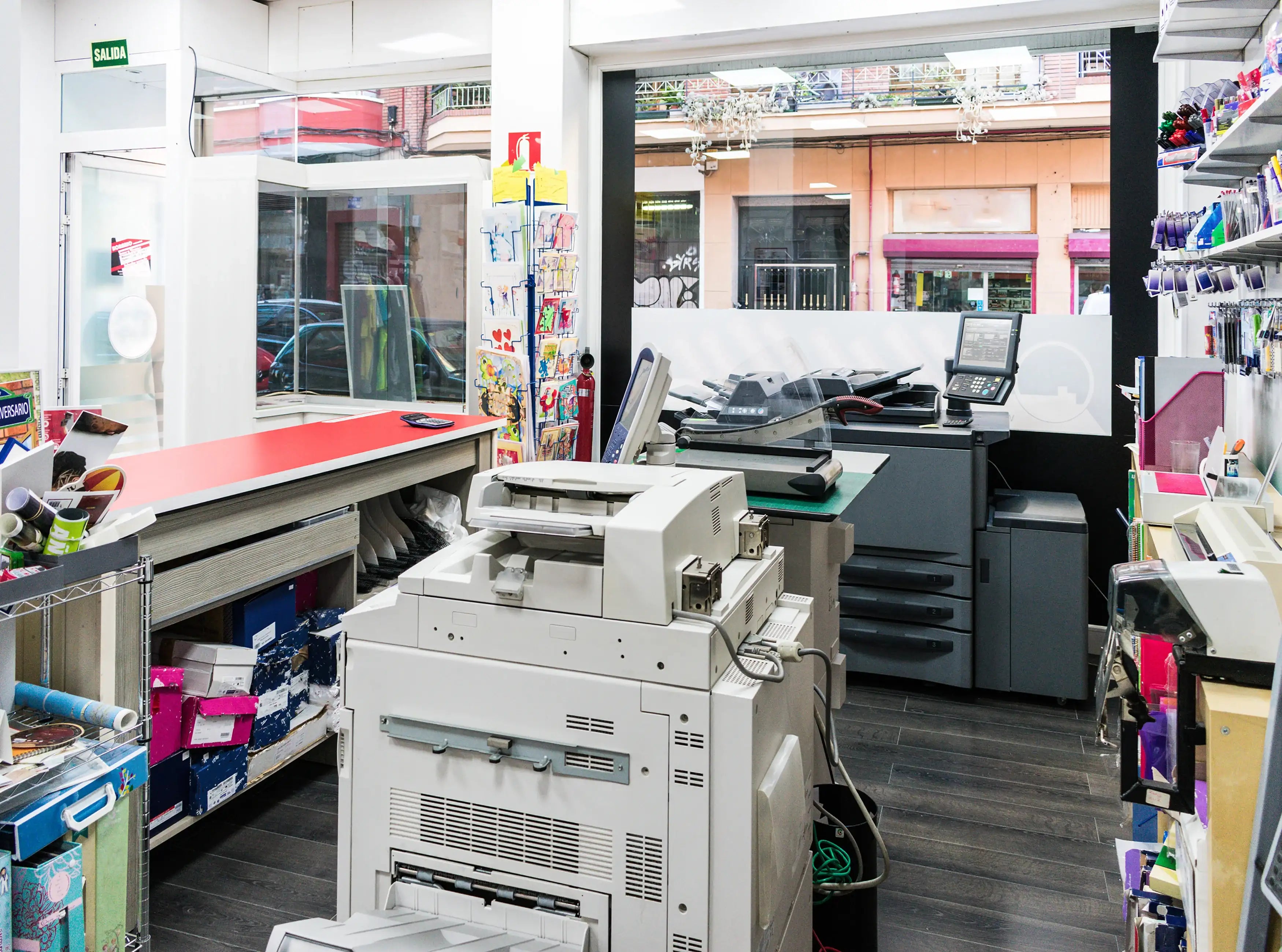3 Types of Printing Every Print Shop Near Me Should Offer
3 Types of Printing Every Print Shop Near Me Should Offer
Blog Article
The Ultimate Overview to Using Printing Providers for Customized Art Prints
Guiding with the world of customized art prints requires a clear understanding of different printing services. Artists have to take into consideration variables such as printing methods and products to accomplish the desired outcome. Each choice, from art work prep work to shade calibration, plays a necessary function in the end product. As they check out these components, musicians can disclose the capacity for their job to link with target markets in a significant means. What steps can they take to assure their prints stand apart?
Recognizing Different Kinds Of Printing Providers
Many people might overlook the intricacies of printing solutions, understanding the various types readily available is important for any person looking to produce custom-made art prints. One of the most usual kinds include digital printing, balance out printing, and display printing. Digital printing is favored for its fast turn-around and capacity to produce top quality images directly from digital data, making it excellent for small runs. On the other hand, countered printing offers superior picture quality and is cost-effective for bigger amounts, utilizing plates to transfer ink onto paper. Screen printing, typically used for textiles and marketing items, entails pressing ink with a mesh display, enabling lively shades and structures. Each approach has its one-of-a-kind benefits and constraints, making it important for artists and developers to evaluate their details needs, such as amount, preferred high quality, and budget, before picking a printing service that aligns with their creative vision.
Selecting the Right Materials for Your Prints
Selecting the appropriate products is necessary for achieving top notch custom-made art prints. Recognizing the numerous kinds of paper and the value of ink top quality can significantly influence the result. Artists should think about these factors to guarantee their vision is precisely stood for in the published item.
Paper Types Explained
Choosing the right paper type is crucial for accomplishing the wanted visual and durability in custom art prints. Numerous options exist, each offering distinctive characteristics. For example, glossy paper boosts shade vibrancy and detail, making it perfect for photography prints. Alternatively, matte paper gives a softer finish, which is better for artwork that calls for subtlety and texture. Art paper, usually made from cotton or alpha cellulose, uses historical high quality and is suitable for replicating elaborate information in paintings (Print Shop Near Me). In addition, specialized papers, such as watercolor or canvas, can include special visual impacts. Ultimately, selecting the suitable paper kind will significantly affect the final presentation, guaranteeing that the artwork is both lasting and visually enticing
Ink Quality Matters
Ink top quality plays a crucial function in the total success of customized art prints. Top quality inks assure lively colors, sharp details, and longevity, which are crucial for showcasing creative work. When picking printing solutions, musicians should consider pigment-based inks over dye-based alternatives, as they offer much better fade resistance and shade stability. Furthermore, the choice of ink ought to enhance the chosen paper kind, boosting the print's aesthetic impact. Environmental factors, such as moisture and temperature, can likewise influence ink performance; consequently, artists ought to ask about ink solutions that resist these components. Eventually, investing in remarkable ink high quality can elevate the last product, assuring that the art print holds to the musician's vision for several years ahead.
Discovering Printing Methods: Digital vs. Typical
While both traditional and digital printing strategies have their one-of-a-kind advantages, the decision on which technique to utilize commonly pivots on the details needs of the artwork. Digital printing succeeds in convenience and speed, enabling fast turn-around times and the capacity to publish on demand. This approach is particularly useful for artists that need small runs or special pieces, as it eliminates the requirement for considerable setup processes.Conversely, conventional printing methods, such as lithography and screen printing, frequently produce richer appearances and colors, attracting artists seeking a much more authentic and responsive finish. These techniques can boost the depth and quality of the artwork, making them suitable for bigger versions. Additionally, standard approaches may supply a distinctive aesthetic that digital printing occasionally struggles to reproduce. Eventually, the option between these techniques must consider variables like wanted high quality, amount, and creative intent, guiding musicians to the most ideal alternative for their jobs.

Preparing Your Art Work for Printing
Successfully preparing artwork for printing requires mindful focus to detail, no matter the picked printing technique. Musicians must assure that their documents are created at the appropriate resolution, normally 300 DPI, to maintain sharpness and clearness. The correct color mode, usually CMYK for print, is crucial to attain the wanted shade precision. Artists ought to likewise take into consideration the measurements of the artwork, ensuring to include bleed areas if necessary, to avoid any unwanted white sides after trimming.Additionally, file layouts play a vital duty; TIFF and PDF are often liked for premium prints. Prior to submission, it is essential to assess the artwork for any type of flaws or unwanted aspects. By carefully examining these elements, artists can boost the chance of their prints straightening with their imaginative vision, inevitably causing an effective printing end result.
The Significance of Shade Calibration and Proofing
Shade calibration and proofing are necessary action in the printing process, as they guarantee that the last outcome accurately reflects the musician's vision. Correct shade calibration assurances that the colors showed on the screen match those that will certainly be printed. This procedure involves readjusting the display settings, printer accounts, and inks to attain a consistent color representation.Additionally, proofing allows musicians to preview their job before the last print run. This phase enables them to discover and remedy any Continue kind of inconsistencies in shade, information, or saturation, thus minimizing expensive errors. By making use of digital or hard-copy evidence, artists can make informed choices regarding adjustments needed for optimal results.Incorporating color calibration and proofing into the printing process not only improves the quality of the last product yet additionally cultivates a trustworthy partnership between the artist and the printing service, guaranteeing complete satisfaction and fidelity to the original artwork.
Picking the Perfect Dimension and Format for Your Prints

Marketing and Selling Your Personalized Art Prints
Advertising and offering custom-made art prints needs a solid brand name identification to attract attention in an affordable market. Reliable on-line promotion strategies and the calculated use social media platforms can significantly enhance exposure and interaction. By integrating these aspects, musicians can produce a compelling presence that attracts prospective buyers.
Structure Your Brand Name Identification
Developing a solid brand name identity is important for musicians looking to effectively market and market their customized art prints. This identification encompasses the artist's distinct style, worths, and story, which reverberate with prospective purchasers. Artists need to produce a natural aesthetic existence throughout all platforms, consisting of logo designs, color design, and typography that mirror their creative vision. Furthermore, a clear mission statement assists communicate the musician's objective and passion. Engaging storytelling regarding the ideas behind each piece can foster emotional connections with the audience. Uniformity in messaging, whether on social networks or packaging, improves recognition and trust. By carefully curating their brand identity, artists can distinguish themselves in an affordable market, drawing in faithful consumers who appreciate their virtuosity.
Reliable Online Promotion Strategies
What strategies can artists employ to properly advertise their custom art publishes online? Initially, establishing a professional internet site find here showcasing the artwork is important. This site must include detailed summaries and top notch photos to involve prospective buyers. Additionally, artists can make use of email marketing by developing a client list to share updates, promotions, and new releases. Teaming up with bloggers and influencers in the art neighborhood can increase reach and trustworthiness. Offering unique pieces or limited-time discounts can also develop necessity, motivating acquisitions. Maximizing material for search engines through pertinent keyword phrases will certainly enhance exposure. Finally, preserving a blog about the creative process can draw in art lovers, fostering a deeper link with the audience and boosting the overall marketing technique.
Using Social Media Site Operatings Systems
Social media site systems act as effective devices for artists seeking to market and market their personalized art prints. By leveraging systems like Instagram, Facebook, and Pinterest, musicians can showcase their work to a substantial audience. Involving visuals and calculated hashtags can increase visibility, drawing possible purchasers to their profiles. Regularly posting web content, such as behind the curtain processes or brand-new styles, assists preserve target market rate of interest and fosters a feeling of neighborhood. Additionally, musicians can make use of targeted marketing to get to details demographics, enhancing the possibilities of sales. Collaborations with influencers or various other artists can further magnify exposure. Inevitably, a well-curated social networks presence not only advertises custom art prints yet also constructs a devoted client base gradually.
Often Asked Questions

How Do I Find Reliable Printing Service Providers?
To find reputable printing provider, one must research online evaluations, look for suggestions from peers, compare portfolios, request samples, and examine client service responsiveness. This detailed strategy guarantees informed decisions and adequate outcomes.
What Is the Typical Turnaround Time for Custom Prints?
The regular turnaround time for custom-made prints differs by company, yet generally varies from a couple of days to 2 weeks. Factors influencing this consist of order size, intricacy, and the details printing methods made use of.
Can I Obtain a Refund if I'm Not Completely satisfied With My Prints?
The concern of getting a refund for disappointing prints usually depends on the particular printing solution's plans. Several firms provide satisfaction warranties, while others might have strict return conditions, stressing the importance of reviewing terms beforehand.
Are There Any Kind Of Hidden Costs Connected With Printing Providers?
Lots of printing services may include surprise prices such as arrangement costs, delivery costs, or added fees for details products. It's important for clients to ask about all prospective expenses before settling this content their order.
Just How Can I Guarantee My Prints Are Eco-friendly?
To guarantee prints are eco-friendly, one should select environment-friendly inks, recycled paper, and lasting printing techniques. Investigating printing solutions that prioritize sustainability and acquiring certifications can further ensure marginal ecological influence in the printing procedure. Guiding via the globe of personalized art prints needs a clear understanding of various printing solutions. Many individuals might ignore the ins and outs of printing solutions, recognizing the various kinds offered is crucial for anyone looking to develop custom-made art prints. The most typical types consist of electronic printing, offset printing, and display printing. Successfully preparing art work for printing needs mindful attention to detail, no matter of the selected printing strategy. Prints aimed at galleries may need basic sizes to help with framework, whereas unique layouts might appeal to collectors looking for something distinctive.Lastly, the printing solution's capacities need to be reviewed.
Report this page